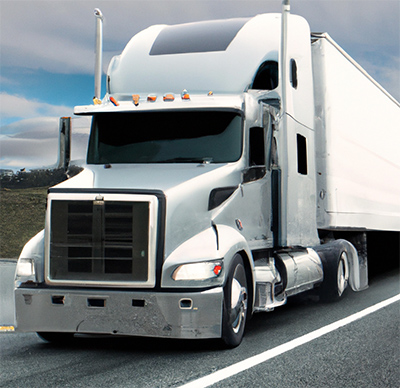MAN Faults
MAN truck fault code refers to a diagnostic trouble code (DTC) that is stored in the electronic control unit (ECU) of a truck when a malfunction is detected. These codes can indicate issues with various systems in the truck, such as the engine, transmission, and braking systems. To determine the specific meaning of a truck fault code, it must be looked up in the vehicle's diagnostic trouble code database using a diagnostic tool, such as a scan tool or code reader.
MAN Fault Codes

MAN Truck problem codes, also known as diagnostic trouble codes (DTCs), refer to specific issues that have been detected within the electronic control systems of a truck. These codes can indicate problems with a variety of systems, such as the engine, transmission, braking system, and emissions control system. DTCs are stored in the truck's electronic control unit (ECU) and can be accessed and read using a diagnostic tool, such as a scan tool or code reader. When a DTC is detected, it will typically trigger a warning light on the truck's dashboard to alert the driver that a problem has been detected and should be addressed. Understanding the specific meaning of the DTC can help to identify and diagnose the problem, allowing it to be repaired.
Common Causes of Truck Problems

Faulty Brakes :
Time Pressure On Driver:
Tire Wear
Improper Cargo Loading
Problems With Starter
Poor Maintenance
MAN Commercial vehicle safety requirements :
Commercial vehicles, such as trucks and buses, are subject to a variety of safety regulations to ensure they are operating safely on the road. Some key commercial vehicle safety requirements include:
- Vehicle Inspection: Commercial vehicles are required to undergo regular inspections to ensure they are in safe operating condition. This includes inspections of brakes, tires, lights, and other critical systems.
- Driver Qualification: Drivers of commercial vehicles are required to have a valid MAN commercial driver's license (CDL) and must meet certain medical and fitness standards.
- Hours of Service: Drivers of commercial vehicles are subject to hours-of-service regulations, which limit the number of hours they can drive in a day and week to prevent fatigue.
- Drug and Alcohol Testing: Drivers of commercial vehicles are subject to random drug and alcohol testing to ensure they are not under the influence while operating the vehicle.
- Electronic Logging Devices: Many commercial vehicles are now required to have electronic logging devices (ELDs) to track the hours of service and ensure compliance with regulations.
- Vehicle Weight and Dimension: Federal and State regulations limit the weight and dimension of commercial vehicles to ensure they can safely operate on the roads.
- Load Securement: Commercial vehicles must follow specific guidelines to ensure the load is properly secured and will not fall off or shift during transport.
- Safety Equipment: Commercial vehicles must be equipped with safety equipment such as fire extinguisher, reflective triangles, and emergency lights.
- Vehicle Marking: Commercial vehicles must be clearly marked with the company name, USDOT number and other information as per the regulations.
- Accident Reporting: Commercial vehicle operators are required to report accidents to the authorities within a certain time frame and also maintain accident reports.
It is important to note that these regulations vary depending on the state, type of vehicle, and type of cargo being transported. It's essential for the commercial vehicle operators to stay updated with the state and federal laws regarding commercial vehicle safety requirements.
How to look at regular MAN highway truck service needs?
To ensure regular MAN highway truck service needs are met, it's important to develop a regular maintenance schedule and stick to it. Some things to keep in mind include:
- Tires: Regularly check tire pressure and tread depth, and replace tires as needed.
- Brakes: Check brake pads and rotors and replace them as needed.
- Oil and Fluids: Regularly check and change the oil, transmission fluid, coolant, and other fluids as recommended by the manufacturer.
- Filters: Check and replace air, fuel, and oil filters as needed.
- Lighting: Inspect all lights and replace any burned-out bulbs.
- Suspension: Regularly check and maintain the suspension system to ensure proper alignment and to avoid uneven tire wear.
- Battery: Check and maintain the battery to ensure it is in good working condition.
- Fuel system: Check and clean the fuel tank, fuel filters, and fuel lines to ensure the truck runs smoothly.
- Belts and hoses: Check the condition of all belts and hoses and replace any that are damaged or showing signs of wear.
- Engine: Regularly check the engine and any other components to ensure they are running smoothly and efficiently.
It is also good practice to keep a log of the above-mentioned check-ups, repairs and maintenance so that you have a good record of the service history of the truck.
Regularly scheduled maintenance for your MAN truck can help prevent costly breakdowns, improve fuel efficiency, and extend the life of the truck. It is important to consult the truck's owner manual and follow the MAN's recommendations for maintenance.
How to be a perfect MAN truck driver ?
Being a perfect truck driver involves a combination of knowledge, skill, and attitude. Some key things to focus on include:
- Knowledge of the rules and regulations governing commercial truck driving. This includes federal and state laws, as well as company policies and procedures.
- Skill in operating the vehicle safely and efficiently. This includes proper use of the vehicle's controls, understanding the dynamics of handling a large vehicle, and being able to navigate safely in various traffic and weather conditions.
- A professional attitude towards the job. This includes being punctual, reliable, and respectful towards other drivers and customers.
- Maintaining the vehicle in good condition and being aware of the load and weight limits.
- Being physically and mentally fit, getting enough rest and staying away from drugs and alcohol when driving.
- Continuously updating your knowledge and skills through training and education, and staying current on industry developments and best practices.
- Being prepared for emergencies and having a solid understanding of emergency procedures.
- Being aware of and prepared for the risks of driving long hours and being away from home for long periods of time.
- Good communication skills, being able to communicate with dispatchers, customers, and other drivers effectively.
- Having a positive attitude and being able to adapt to new situations and challenges.
Remember, safety should always be your top priority as a truck driver.
